Exhibitions in 2019 from the Wallpaper* architecture desk
From immersive installations to informative expos, we’ve visited museums, galleries and project spaces worldwide to bring you an edit of what to see and where in the world of architecture. Here’s what happens when architects, curators and academics get together to create and educate...
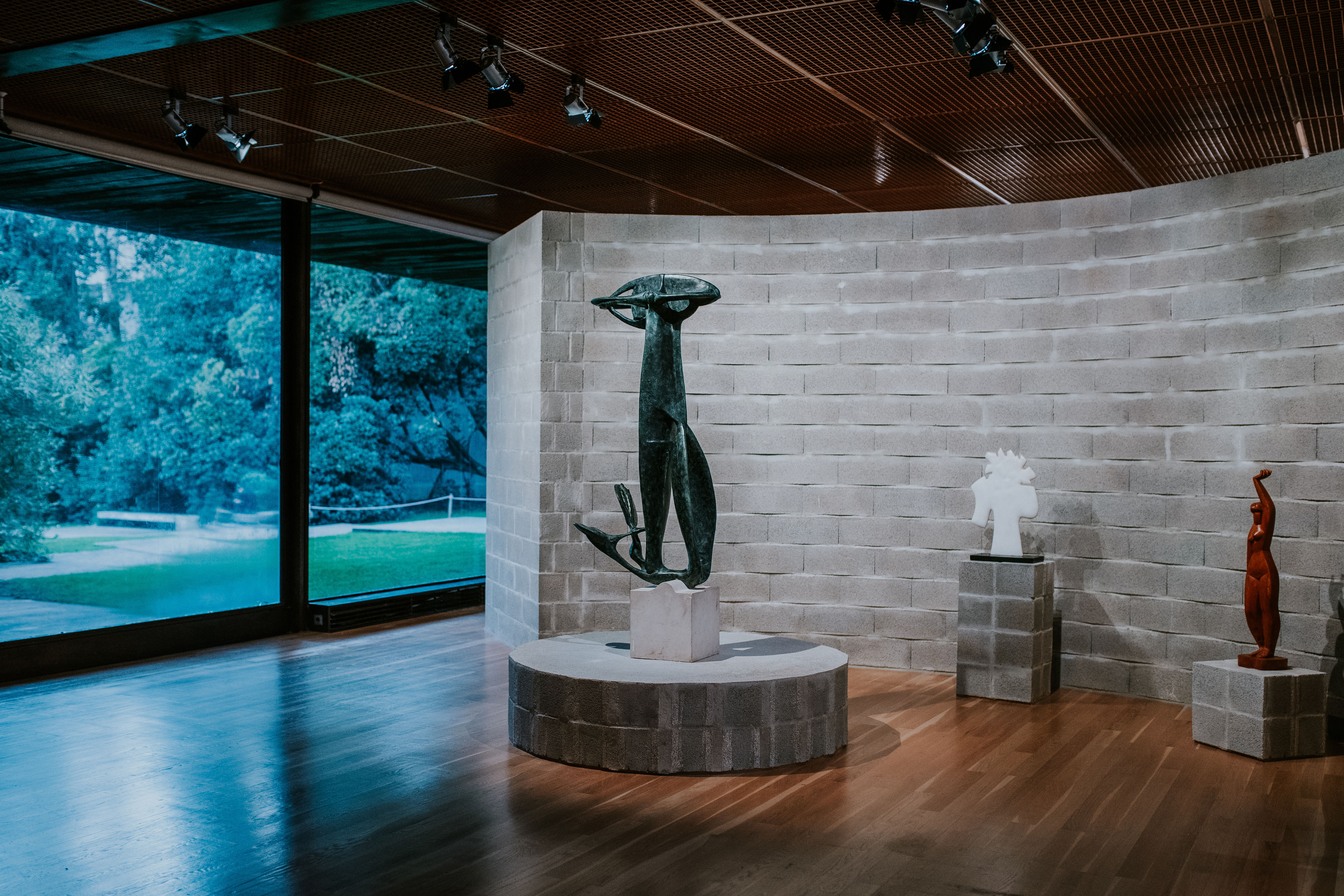
Art on Display
Calouste Gulbenkian Museum
8 November 2019 – 2 March 2020
On the 50th anniversary of the Gulbenkian Museum, curators Penelope Curtis and Dirk van den Heuvel take the opportunity to look back upon the art of exhibition display and design. Opened in 1969, the museum was quickly recognized as a model for other institutions due to the timeless nature of the architecture. Case studies from across the world include exhibition design ideas by Franco Albini and Franca Helg, Carlo Scarpa, Lina Bo Bardi, Aldo van Eyck and Alison and Peter Smithson, where art is presented under diverse conditions – composed in groups, on beds of rubble or concrete plinths. It reveals how during the post-war period, architects were among the first to respond to the challenges of mass entertainment. Pictured, Art on Display exhibition view.

Jean Nouvel: In my head, in my eye… belonging…
Power Station of Art, Shanghai
7 November 2019 – 1 March 2020
For the first solo exhibition in China on Pritzker Prize-winning French architect Jean Nouvel, the galleries at the Power Station of Art will be transformed into an immersive theatre of light and shadow designed to transport visitors into the mind of Nouvel. A film produced by Nouvel himself explores six works of art based on six buildings, intended to showcase how each work uniquely explores nature, light and emotion. A tower-like monument at the heart of the exhibition expresses Nouvel’s pursuit of infinity and eternity through his art. Pictured, Jean Nouvel’s Arab World Institute in Paris, 1987.

[ a kit of these some parts ] x budget gym ]
Materials & Applications, Los Angeles
19 October 2019 – 5 January 2020
This exhibition presents an architectural kit made up of a catalog of parts that facilitates working out designed by stock -a-studio, a multidisciplinary design studio led by Laida Aguirre, an Assistant Professor of Architecture at the University of Michigan’s Taubman College of Architecture and Urban Planning. Constructed of poles, panels, tension straps and tarps, used widely for event tents and trade show booths, this gym explores the ‘accelerated loop between culture and commodity’ through its low budget and non-permanent form designed to be re-aestheticized and reassembled for future uses. The gym can be used for weight-lifting, trainer-led workouts, as a hydration station or meet up point.
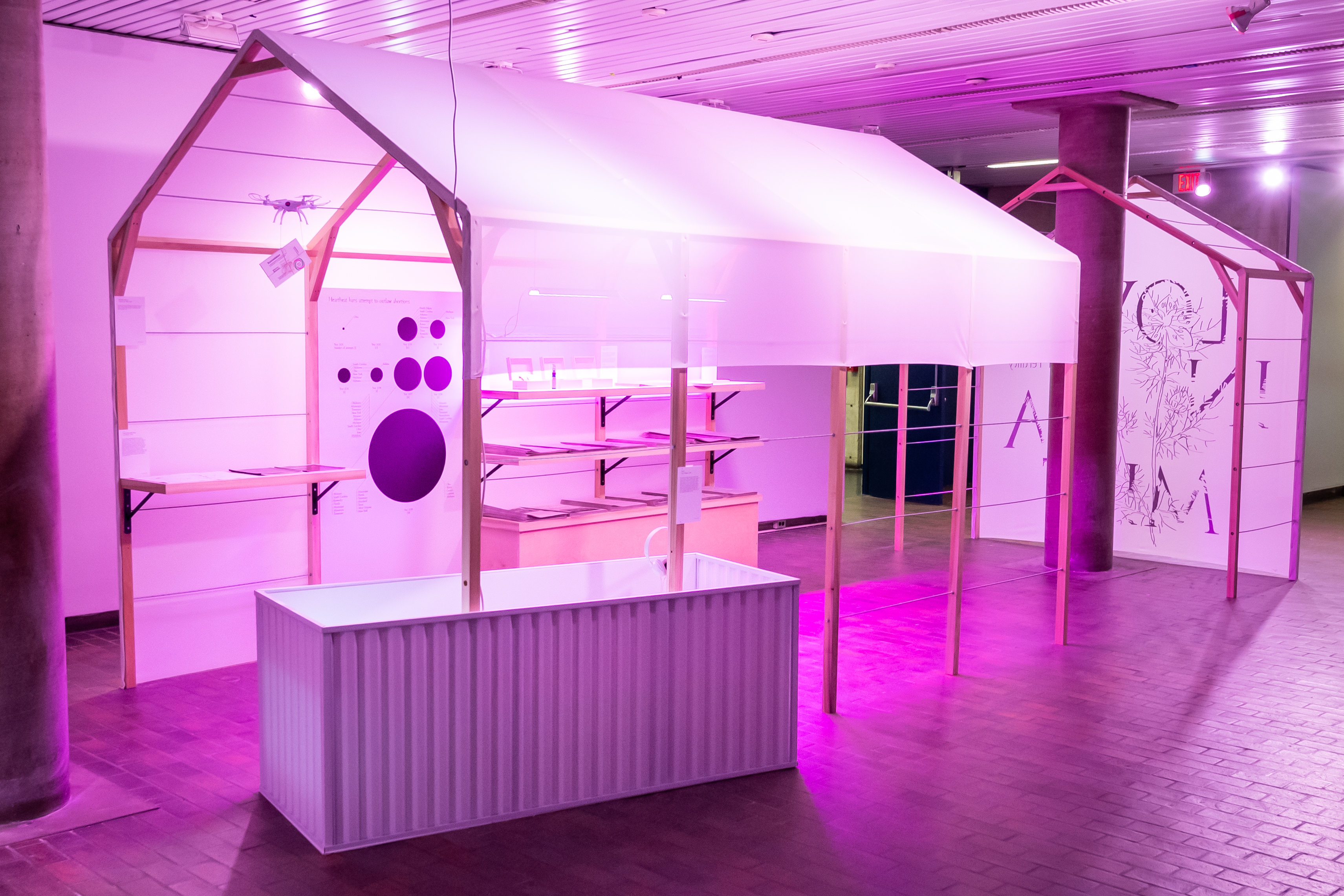
Love in a Mist: The Politics of Fertility
Harvard GSD, Cambridge, Massachusetts
28 October – 20 December 2019
The relationship of fertility and architecture may not be immediately obvious, but it's exactly this that the latest exhibition at Harvard GSD is exploring. Curated by architect-researcher Malkit Shoshan, the thought provoking installations investigate spaces where women are and are not in control of their bodies, touching upon often controversial subjects, such as abortion. The displays are divided into four ‘greenhouses', each of which houses a different theme, posing questions and looking at present and future practices and case studies.
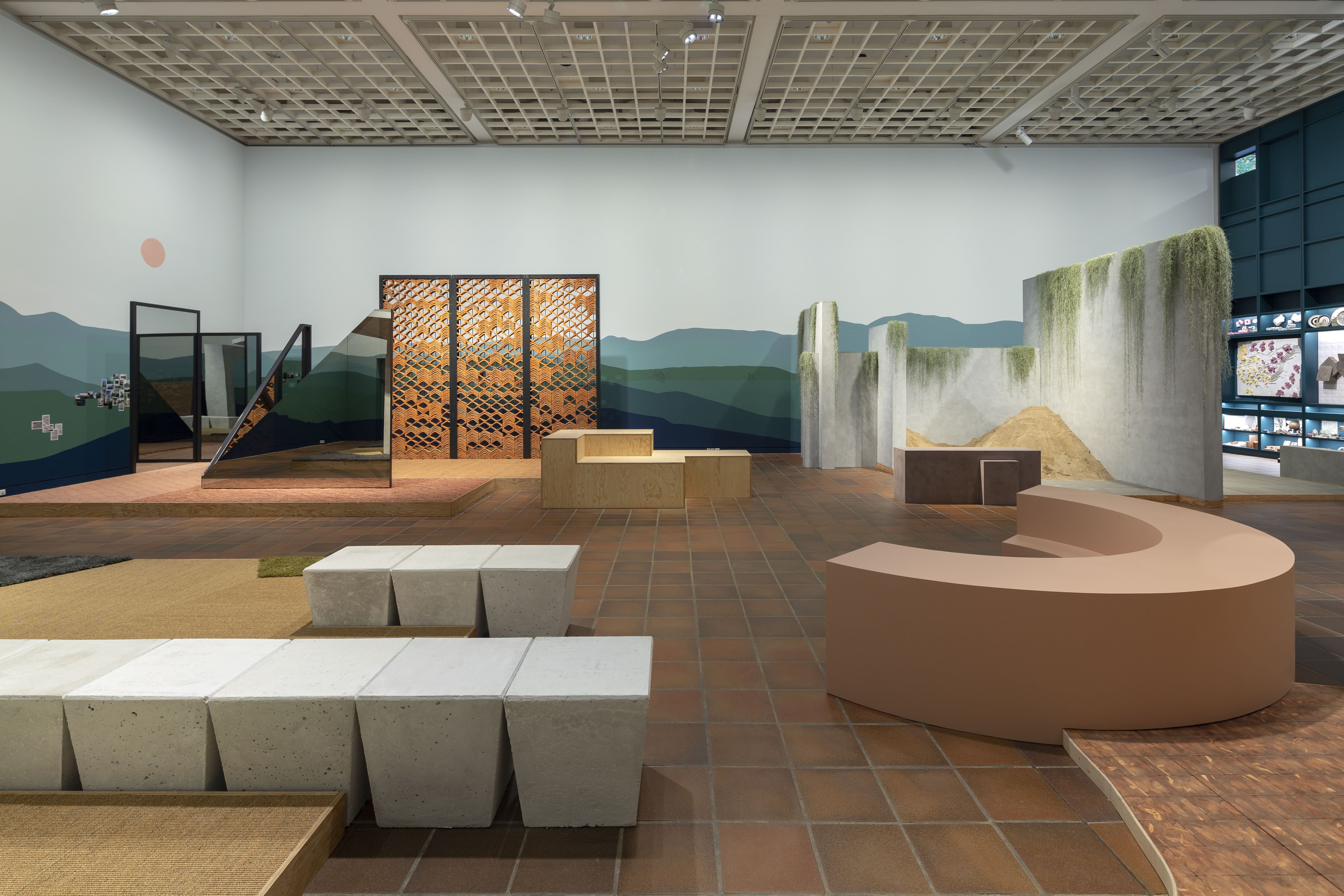
The Architect’s Studio: Tatiana Bilbao Estudio
Louisiana Museum of Modern Art, Humlebæk, Denmark
18 October 2019 – 16 February 2020
For the third exhibition in the ‘The Architect’s Studio’ series, the Louisiana Museum of Modern Art examines the work of Mexican architect Tatiana Bilbao. The exhibition looks to both the architect’s more design-heavy projects – such as the Mazatlán Aquarium in Sinaloa, Mexico – and her works in the realm of social housing. The series’ theme covers sustainability and socially conscious design, and has previously featured case studies by Alejandro Aravena and Wang Shu.

What is radical today? 40 positions on architecture
Royal Academy of Arts, London, UK
6 September – 7 November 2019
The 60s and 70s are widely recognised as two of the most politically tumultuous decades. The radical art, design and architecture movements born out of them directly responded to their key events, including the Vietnam War and construction of the Berlin Wall. London’s Royal Academy of Arts invited 40 practitioners spanning over fifty years of practice to consider what can be deemed radical in the 21st century, and to share their thoughts with a single A3 image and a 100-word response. From Gaetano Pesce to Francis Kéré, the featured designers span the breadth of modern architecture’s timeline. Image: Maio

Reflections: The Anatomy of Form
Design Museum, London, UK
6 – 22 September 2019
As part of London Design Festival, local firm Skidmore, Owings and Merrill (SOM) reveals the artistic side to its design processes in an exhibit at the Design Museum. A series of models that includes London’s The Stratford, Chicago’s Willis Tower and the Burj Khalifa in Dubai shows how the firm operates at different scales, with the aim to leave a positive impact on both location and community. The show is a prelude to the firm’s upcoming show at the Ambika Gallery, ‘The Anatomy of Structure: Art + Engineering + Architecture’.
Receive our daily digest of inspiration, escapism and design stories from around the world direct to your inbox.

Bauhaus inflections in São Paulo – Leonardo Finotti
Casa Modernista, São Paulo
18 August 2019 – 29 March 2020
Twenty photographs of Bauhaus-inspired São Paulo monuments by photographer Leonardo Finotti will be on show at the Casa Modernista. The solo show has been curated by architect Marcos Cartum, director at Museu da Cidade, and designed by architect Michelle Jean de Castro. Photographer Finotti has revisited Latin American modern architecture throughout his career and in the exhibition you’ll find photographs of the Vilanova Artigas’ Santa Paula Boat Garage, Lina Bo Bardi’s Sesc Pompéia, Décio Tozzi’s Villa-Lobos Park amongst others – each building revealing aspects of Bauhaus in combination with local architectural elements. The exhibition design has been conceived as a site-specific installation that is an interplay between the photographs and Gregori Warchavchik’s iconic house. Image shows Décio Tozzi - Villa-Lobos Park, São Paulo SP, Brazil.

Future Cities: Technopolis & Everyday Life
CFCCA, Manchester, UK
2 August – 19 October 2019
The Centre for Chinese Contemporary Art has launched a season of programming addressing the future of urban development – digital and physical. The exhibition Future Cities: Technopolis & Everyday Life, which includes artists Lawrence Lek, Chiawei Hsu, Zheng Mahler, Cinemuse Project and Liam Young, addresses the idea of the city as a digital location, the concept of ‘smart environments’, physical limits of cities in the face of declining natural resources and climate change. The artists, all working at the intersection between art and architecture, are well-placed to fearlessly explore the possible terrains of our urban future.

Baukunst – Performance & Performativity
BOZAR, Centre for Fine Arts in Brussels
25 September 2019 – 5 January 2020
The second in a series of monographic exhibitions on Belgian architectural firms at BOZAR in collaboration with A+ Architecture in Belgium, this show charts the philosophy of Baukunst, founded by Adrien Verschuere in 2008. Subtitled ‘Performance & Performativity’ the exhibition examines the firm’s interdisciplinary approach to practice in which architecture sits at the crossroads of art and science. Visitors will be able to explore moving models, photographs and installations. Images show Baukunst’s Hotel des Archives, Genève, Switzerland, 2018

Titan: Variations
Maison régionale de l’architecture des Pays de la Loire, Nantes
21 June – 8 September 2019
Nantes-based architecture firm Titan have launched an exhibition at their local architecture centre, focusing on the varied and valuable role materials play in the design world. Exploring a range of different examples, from wood to stone, brick and more, the French studio is looking at a series of ‘interventions' - either prototypes or research models - that each tell a different story. The presentation is minimalist and the message clear; architectural materials offer numerous possibilities to an architect, while each adding its own unique sculptural quality to a project.

Formgiving: an architectural future history from BIG Bang to singularity
Danish Architecture Center
12 June 2019 – 5 January 5 2020
For the DAC’s most extensive exhibition to date, the work of Bjarke Ingels Group (BIG) will be explored in depth alongside a historical timeline on 'formgiving' from the Big Bang, up to today, and beyond into the possibilities of the future. A fun twist to the show is a Lego universe that invites users of all ages to contribute their own form to the history of formgiving. Pictured, the Danish Expo Pavilion designed by BIG in 2010.

Laughing Matters: The State of a Nation
Victoria & Albert Museum
29 March 2019 – 29 March 2020
London’s Victoria & Albert Museum reveals a new room within its British Galleries that explores the notion of ‘Britishness’. Designed by London firm Aberrant Architecture in collaboration with the V&A Design Studio, Gallery 55 hosts ‘Laughing Matters: The State of a Nation’, which reflects on the role of humour across 200 years of British politics. Aberrant Architecture also took to the redesign of the Clore Study Area, a living room-like space for visitors to charge up their devices and relax with space for children to play. The bold colour palette draws on the works of British interior designer David Hicks, whose oeuvre chronologically parallels the birth of alternative British comedy in the 1960s.

Architecture Projects: Skeppsbron
ArkDes – Swedish Centre for Architecture and Design
28 April – 9 June 2019
Stockholm’s ArkDes asks a singular question in its latest exhibition – What do we want our city to be? Taking the historical commercial centre of Stockholm, Skeppsbron, as a case study, eight of the Swedish capital’s brightest firms present their vision for a better city. Showcasing drawings, models, words and reference objects, participating practices – Esencial, Elizabeth B. Hatz, Hermansson Hiller Lundberg, AT-HH, OKK+, Krupinski/Krupinska, Nilsson Rahm and Tor Lindstrand – hope to stimulate dialogue around bettering the future of Skeppsbron. ‘This collective effort from a group of world-class architects and practices celebrates the capacity of architecture as an imaginative force, that can help us think radically and practically about the future city,’ says exhibition curator James Taylor-Foster. Pictured, Esencial’s contribution to the exhibition. Courtesy: Krupinski/Krupinska
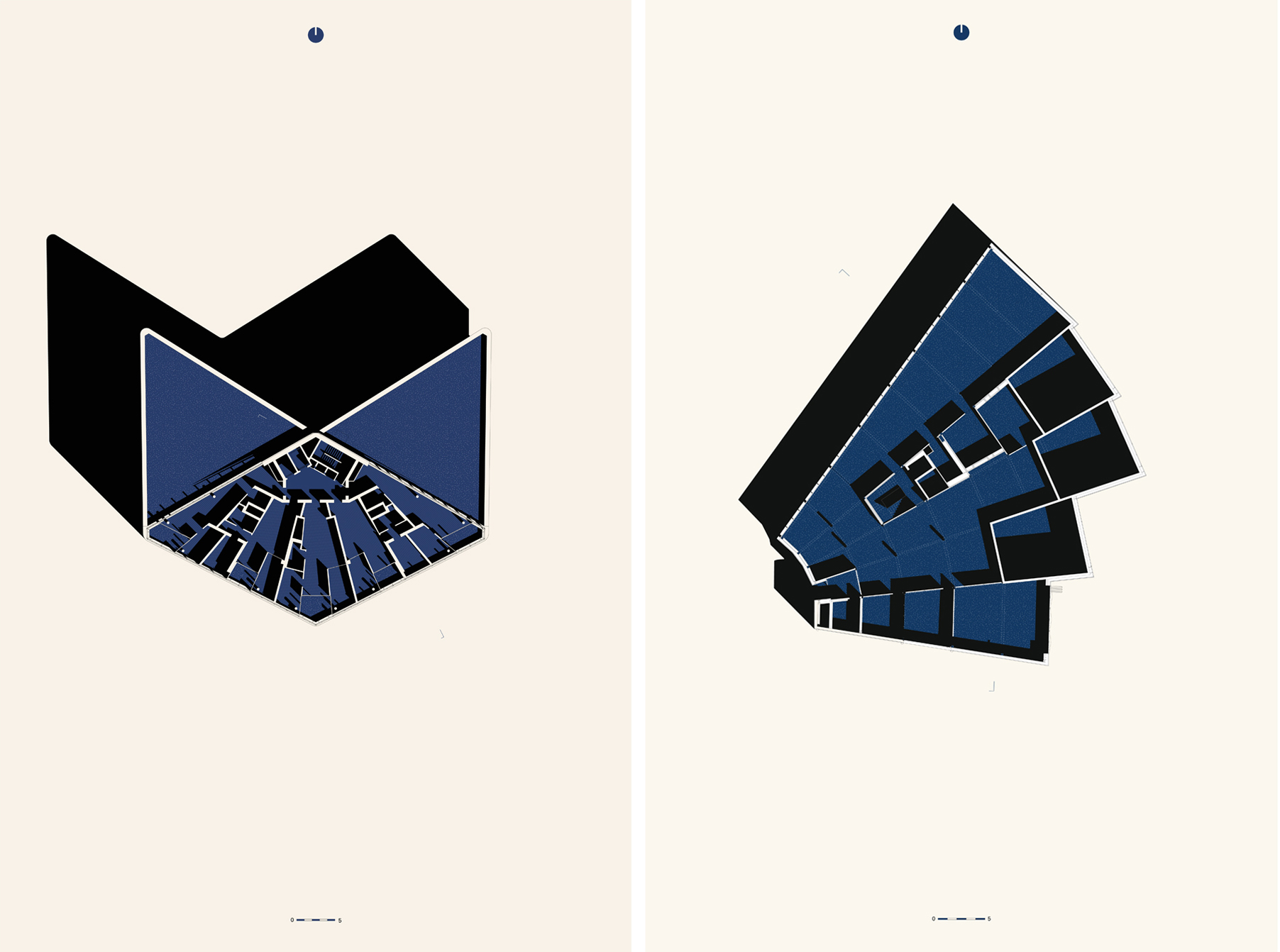
The Last Act of Design: Built works by Christ & Gantenbein
Archive and Museum, Kyoto Institute of Technology
4 – 20 April 2019
This exhibition shines light on the beguiling practice of Basel-based architects Christ & Gantenbein founded in 1998 by Emanuel Christ and Christoph Gantenbein. Through a display of significant works, including profiles of the Swiss National Museum in Zurich and the Kunstmuseum Basel, the show demonstrates how the firm combines ancient and modern architecture. Photographs by Stefano Graziani, a long-term collaborator with Christ & Gantenbein, document the buildings visually, while drawings and models reveal process and form. Pictured here, drawings of the List Customer Center, Arisdorf, 2015, and Mixed-use Tower, Pratteln, 2016

Lina Bo Bardi: Habitat
Museum of Art São Paulo
5 April – 28 July 2019
This exhibition explores the breadth of architect Lina Bo Bardi’s production and thinking across what she called ‘environmental architecture’. Bo Bardi (1914-1992) hailed from Italy and ‘adopted’ Brazil as her nation, where she shaped a new language of modernism combining influence of the arts with her own personal experience of Brazilian culture. The exhibition will travel to the Jumex Museum in Mexico City and the Chicago Museum of Contemporary Art (MCA) in 2020. Pictured here, ‘Museu de Arte de São Paulo – Perspectiva’, 1957-1968, watercolor, graphite and collage on offset paper.

Irreplaceable Landscapes
Danish Architecture Centre
22 March - 26 May 2019
Danish architect Dorte Mandrup celebrates 20 years of her eponymous studio in a new multi-sensory exhibition. ‘Irreplaceable Landscapes’ explores the impact of climate change on architectural design around the Wadden Sea, a southeastern area of the North Sea. Large-scale installations and virtual reality films place visitors into these fragile landscapes with an aim to highlight the importance of environmentally conscious design. Examined projects include Dorte Mandrup’s Wadden Sea Centres, each designed to reflect their site-specific vernaculars of the Netherlands, Germany and Denmark. One installation sees visitors glide over the centre in Ribe, Denmark, accompanied by the natural soundscape, experience the building’s construction and feel a part of its thatched roof underfoot. Pictured here, the Isfjord Centre in the landscape.

Robert Konieczny: Moving Architecture
Architektur Galerie Berlin
16 March – 27 April 2019
KWK Promes Robert Konieczny explores the very nature of architecture in a new exhibition at the Architektur Galerie in Berlin. ‘Moving Architecture' may be entirely composed of static elements, yet it is especially designed to instigate motion – urging the viewers to move around the exhibits and examine architecture through a spatial journey. Even upon entering the show, the displays convey the impression of moving walls; but this is not the case, it is just an elaborate illution, designed by Konieczny and his team together with the gallery's curators.
The beautifully created exhibit looks sleek and flawless, appearing seamless from the outside, as it uses the same type of stone as the overall building where the gallery is located. Further inside, four monumental pictures dominate the show. They are ‘slightly tilted from the wall plane, as if frozen in motion', explain the architects. As the visitor views and moves around them, they are perceived to be moving, adding a layer of time and space onto what initially appears as a two-dimensional show. Cleverly minimalist yet rich on an experiential level and providing fertile ground for debate on what architecture is, this show is not to be missed.

Arakawa: Diagrams for the Imagination
Gagosian, New York
5 March – 13 April 2019
Japanese artist Arakawa's work straddles the art and architecture worlds. He works with schematic images and blueprints explored in this exhibition through his works in paint, ink, graphite, and assemblage on canvas and paper made between 1965-1984. The artist was famously one of the founding members of the Japanese avant-garde collective Neo Dadaism Organizers and then moved to the US in the 1960s. ‘In his work, the image is often merely a stimulus, as the ultimate act of representation is displaced from the canvas, or object, to the imagination of the viewer, opening up a gap between the eye and the mind,’ explain the curators.

Dimensions of citizenship: architecture and belonging from the body to the cosmos
Wrightwood 659
28 February – 27 April 2019
The US pavilion exhibition created for the 16th Venice Architecture Biennale lands in Chicago to bring its debates around the meaning of citizenship to the local audience. The show encompasses the seven installations featured in ‘Dimensions of Citizenship’ by architect teams Amanda Williams + Andres L. Hernandez, in collaboration with Shani Crowe; Studio Gang; SCAPE; Estudio Teddy Cruz + Fonna Forman; Diller Scofidio + Renfro, Laura Kurgan, Robert Gerard Pietrusko with Columbia Center for Spatial Research; Keller Easterling with MANY; and Design Earth. Each team questioned what being a citizen means today.

Siza – Unseen and Unknown
Tchoban Foundation, Musuem for Architectural Drawing
21 February - 26 May 2019
One hundred sketches from Álvaro Siza’s personal archive and small collections of his family and friends are presented in this exhibition. Each drawing holds a story of his own life and work, bringing to the surface his belief in the importance of family, his understanding of cities, history and modernism. While important projects are viewed in new ways such as the Sports Complex for the 1997 Universiade in Palermo, the School of Porto, the New Orleans Tower and his Chinese Design Museum in Hangzhou.
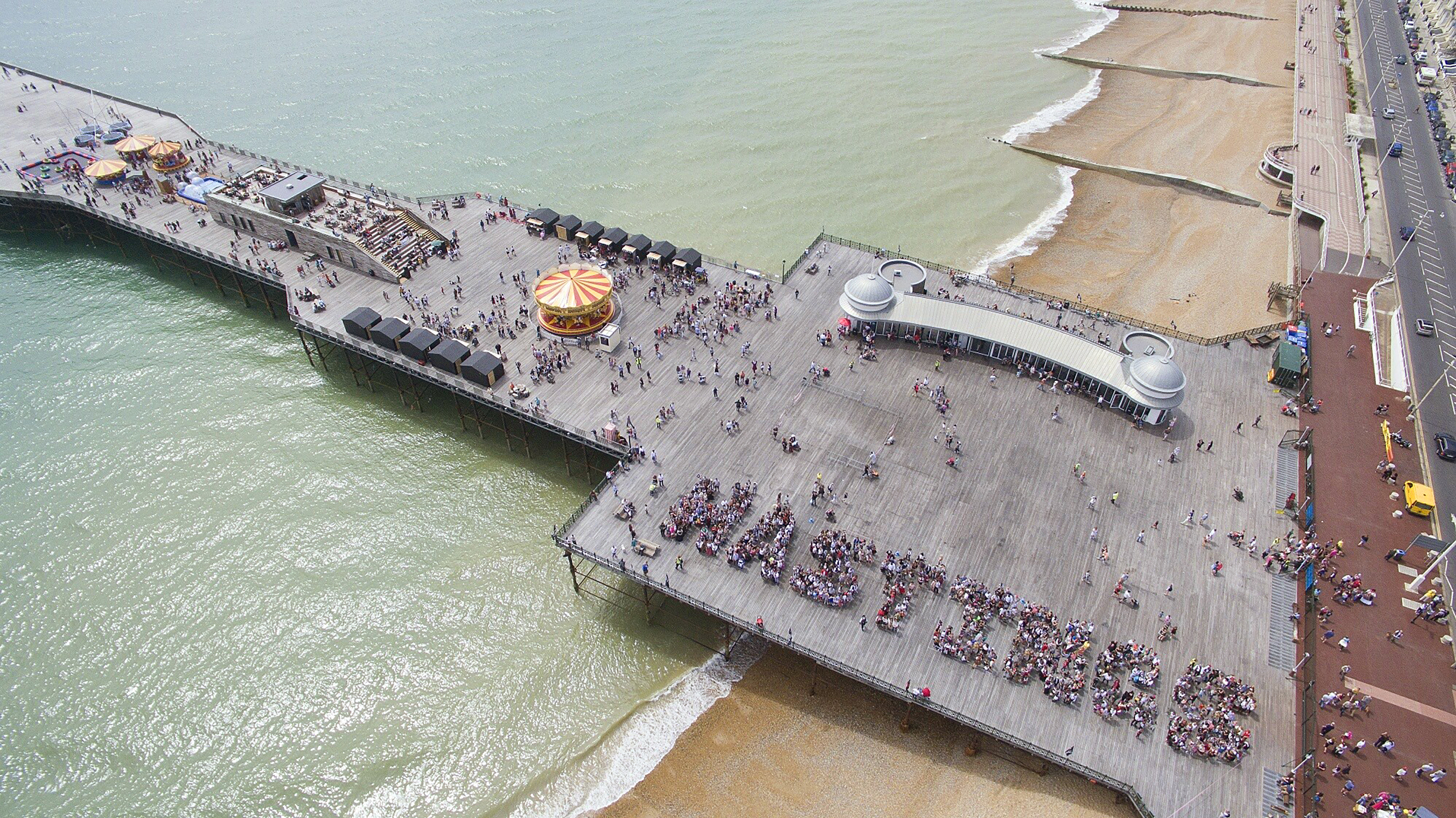
Making It Happen: New Community Architecture
RIBA Architecture Gallery
30 January – 29 April 2019
This exhibition explores how architects have worked directly with communities during times of austerity, taking on the role of architects, activists and educators to galvanise community support. Immersive installations in the gallery open up new ways of understanding the stories behind four case studies in Britain – Hastings Pier, Coniston Mechanics Institute, Old Manor Park Library and Loch Lomond National Park. Each project was born into the midst of funding cuts, shifting priorities and privatisation, with the need to adapt and respond to these changing demands. The exhibition also highlights communities that reacted with mobilisation and crowd-funding to contribute to the developments of the projects. Pictured, Hastings Pier designed by dRMM.

Drawing Codes: Experimental Protocols of Architectural Representation
Cooper Union, New York
23 January – 23 February 2019
As a detailed exploration of architects’ drawings, this show investigates how ‘emerging design and production technologies impact the ways in which architects engage with traditional practices of architectural drawing,’ explain curators, Andrew Kudless and Adam Marcus. The pair invited a range of architecture professionals to create a new piece for the show, conforming to a strict set of rules: consistent dimension, black and white medium, and limiting the drawing to two-dimensions. The resulting pieces – some 25 artworks – offer a range of responses engaging inventively the medium of drawing. Pictured here, 'The House Of The Woodland' by WOJR.
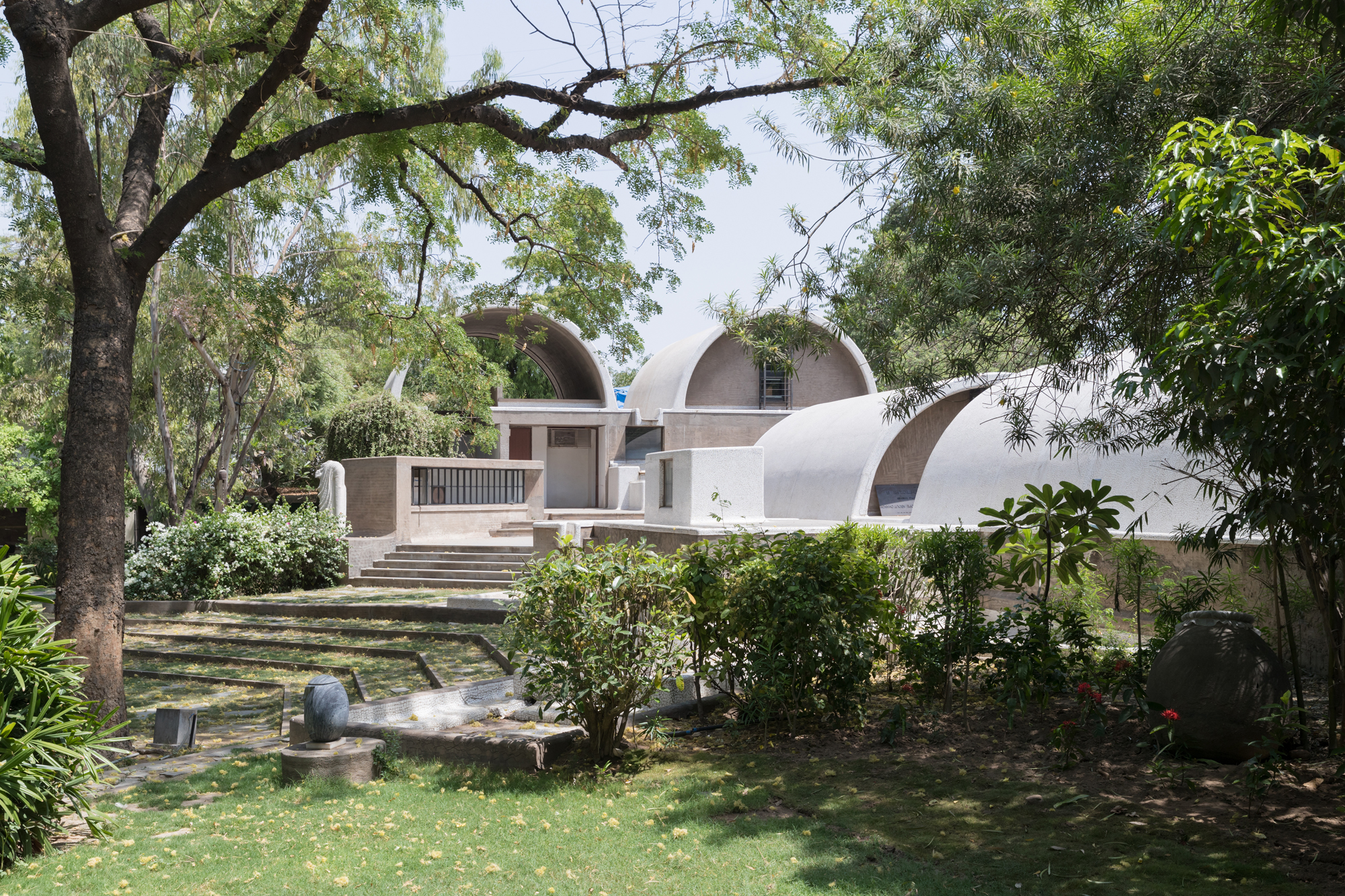
Balkrishna Doshi: Architecture for the People
Vitra Design Museum
30 March – 8 September 2019
This retrospective of Pritzker prize 2018-winning architect Balkrishna Doshi will bring his 60 year career and work into context with displays of numerous projects between the years 1958 to 2014. For his first major exhibition outside of Asia, an array of archive material, artworks, photography, film and full-scale installations will be shown alongside an extensive timeline. His relationship with leaders such as Le Corbusier and Christopher Alexander and conversations on his definition of modern Indian architecture and global influence will be explored, alongside his humanist philosophy and ethical beliefs. Pictured, exterior view of Doshi’s architectural studio, Sangath Architect’s Studio, Ahmedabad, built in 1980.

David Adjaye: Making Memory
Design Museum, London
2 February - 5 May 2019
Seven projects by architect Sir David Adjaye OBE will be explored in depth within this exhibition that examines the role of monuments and memorials in the 21st century. Adjaye often uses form as a means for storytelling and the show will dig deep into the psychological role of architecture in memorialising triumphs and failures. The case studies will reveal how Adjaye’s design process lifts ideas from anthropology, history and sociology to express history, while also communicating with an activated 21st century audience.
‘The monument is no longer a representation, it is an experience of time and place that is available to everyone,’ says Adjaye. Cultural objects and references will be on display with models, plans and drawings. Traditional Asante umbrellas will be shown alongside models of the National Cathedral of Ghana showing its visual connection to its cultural source, while designs for his proposed Coretta Scott King and Martin Luther King Jr. Memorial in Boston will be shown for the first time. Pictured, rendering of the National Cathedral of Ghana.

Kashef Chowdhury/URBANA
Aedas Architecture Forum, Berlin
26 January – 6 March 2019
Opening up the studio practice of architect Kashef Chowdhury to the public, this exhibition presents the work of URBANA through models, photographs, film footage, and plans. This is the first comprehensive European exhibition on the work of Bangladesh-based Chowdhury, who received the Aga Khan Award for Architecture in 2016 for the Friendship Centre on the flood plains of Gaibandha in northern Bangladesh. His work is recognized for its sensitivity to context – born of the extreme tropical climates and dense population of Bangladesh – and its radical simplicity with an ability to harness local building techniques and materials.
Curated by Niklaus Graber and Andreas Ruby, the exhibition features projects such as his stormproof school in the Rohingya refugee camp of Ukhia along the border to Myanmar; the island-shaped village near the Bramaputra River; the seven-floor Gulshan Society Mosque in Dhaka; and the Cyclone Shelter in Kuakata on the Bay of Bengal coast. As well as addressing immediate needs to users, each project also contributes to urgent issues such as population density, climate change, migration, and the reactivation of rural potential.
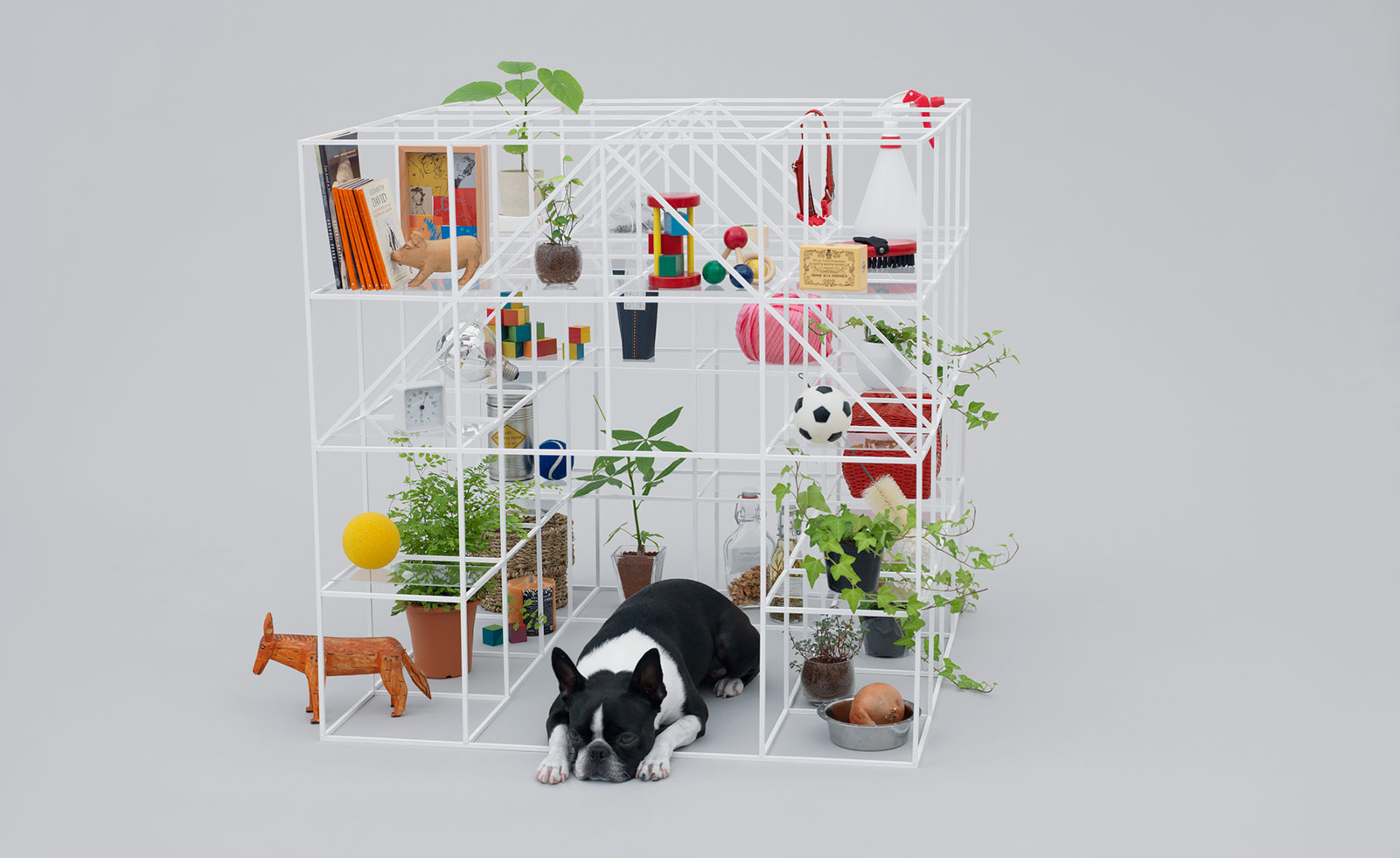
Architecture for Dogs
Japan House São Paulo
19 January – 7 April 2019
Curated by Japanese designer Kenya Hara, this exhibition features conceptual dog houses designed by renowned architects and designers including Shigeru Ban, MVRDV, Konstantin Grcic and Toyo Ito. Brazilian architects FGMF were invited by Japan House to design a new project, a house developed specially for the Yorkshire Terrier breed named ‘the Cocoon’. The exhibition investigates the dog houses in the context of projects that bridge the scale of the human ‘architectural’ space, and that of furniture design. Pictured, Go Project No Dog No Life by Sou Fujimoto.

Presences – Níall McLaughlin Architects
RIBA Florence Hall, London
10 – 28 January 2019
A chance to see Níall McLaughlin Architects’ contribution to the 16th Venice Architecture Biennale, this interactive installation at RIBA presents the very same six large-scale models from the London-based practice. Presented upon a cosmic rotating table, each model represents a hall for gathering that has been designed by the architects. The positioning of the models seeks to communicate the relationship between buildings and the procession of ‘fugitive elements’ that pass through them periodically. The models of buildings feature a garden theatre at Worcester College in Oxford; a fish and chip shop on Deal Pier in Kent; and a castle hall and watchtower in Durham.
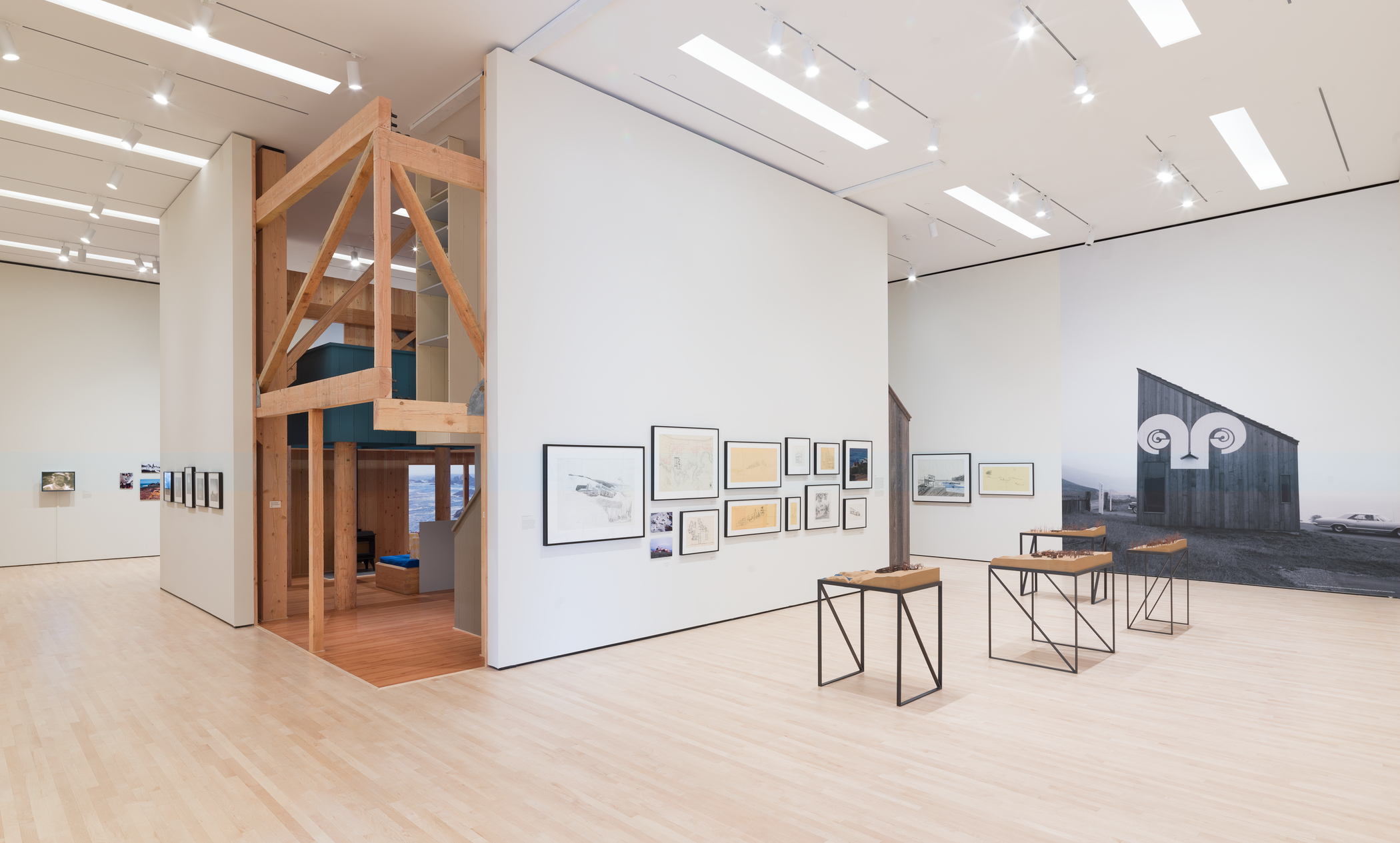
The Sea Ranch: Architecture, Environment, and Idealism
SFMOMA, San Francisco, USA
22 December 2018 – 28 April 2019
The Sea Ranch is an iconic architectural community, set just north of San Francisco, on the rugged and wind-swept California coast. Conceived by developer Al Boeke in the 1960s, Sea Ranch was imagined as a model residential complex that would unite affordability with a modern design approach and architectural vision. A group of Bay Area architects, landscape and graphic designers were involved, including Charles Moore, Joseph Esherick, William Turnbull, Lawrence Halprin and Barbara Stauffacher Solomon. This newly opened SFMOMA show takes the visitor through a tour of this progressive scheme.
The exhibition spans from early concepts and plans through to the completed work, exploring all aspects of the Sea Ranch development. Exhibits feature archival and contemporary photographs, original drawings and sketches from the project’s designers and a full-scale architectural replica. At the time, 'modern architecture represented social progress', say the organisers, explaining how Sea Ranch made the most of this approach offering a truly innovative version to the typical Northern California Modern residential development.

Eskyiu Playkits
ArtisTree, Hong Kong
17 - 28 November 2018
Design experts Marisa Yiu and Eric Schuldenfrei of multidisciplinary Hong Kong practice Eskyiu showcase the transformative nature of design and their own experimental approach in a playful way at this exhibition. Yiu and Schuldenfrei put together a bespoke and 'complex set of transformable objects' designed to perform different functions for each occasion and program. A series of events will take place within the space and will include six days of sports experiences co-hosted with Nike, a dynamic round-table discussion, and an experimental music and sound experience in collaboration with HKNME. Through this playful space, Eskyiu are marking over 10 years of creative journeys in Hong Kong, and beyond. Writer: Ellie Stathaki
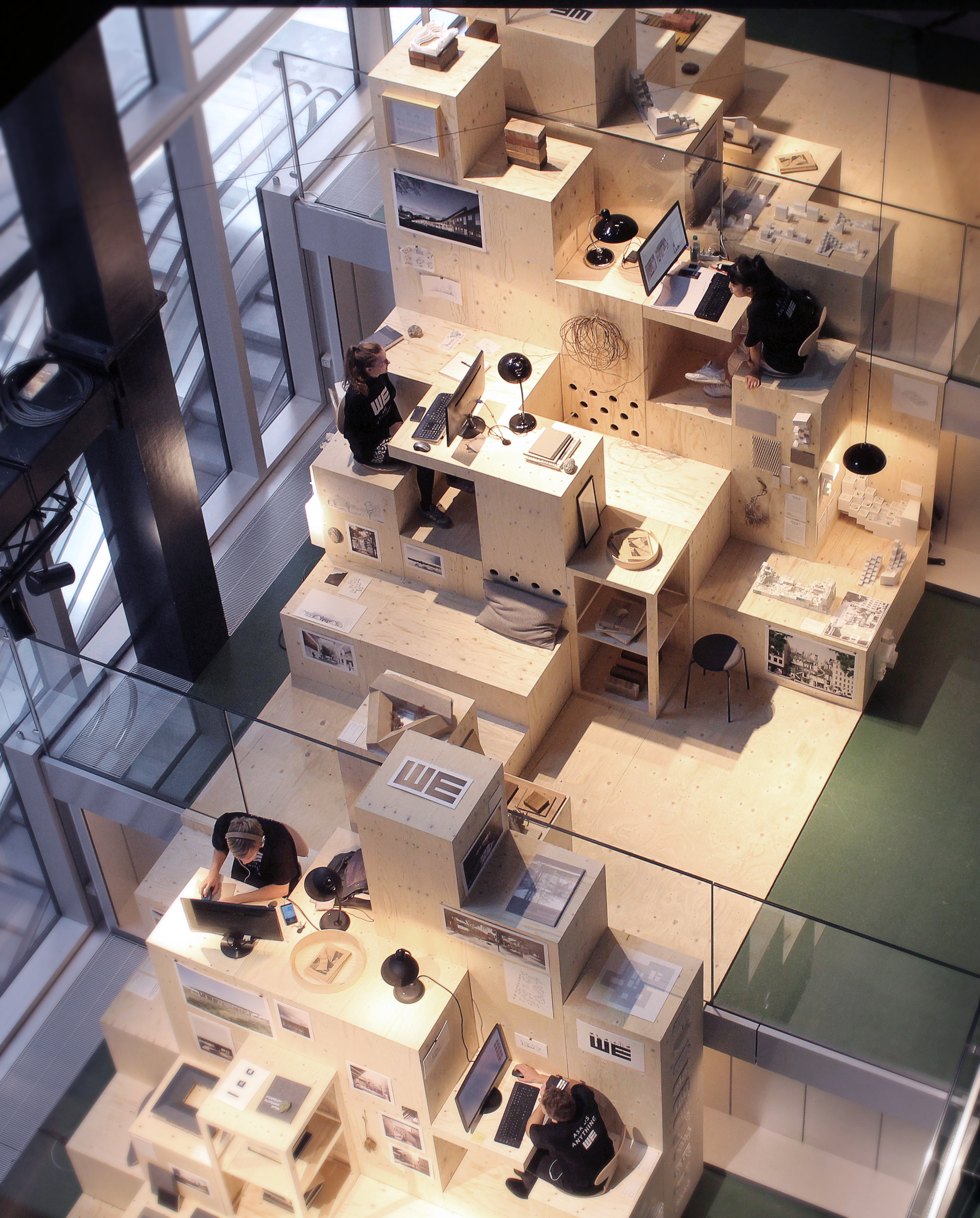
WE
BLOX, Copenhagen
18 October - 2 November 2018
A cascading structure has taken over BLOX. Entitled ‘WE' and designed by WE Architecture, the project is a special commission by Dreyers Fond and the Danish Architecture Center (DAC). WE picked ‘community' as their theme and approached the design as an insight into how architects – and they, specifically – work. The space was redesigned as a version of an architectural office, which focuses on the idea of community – a theme essential to the studio's ethos. ‘When we shape architecture we create the frame for future communities. Our task is therefore essential. Focusing on community, we as architects must create the optimal conditions for the years to come,’ the architects explain. Writer: Ellie Stathaki

Archive and Artifact: The Virtual and the Physical
The Cooper Union, New York
23 October – 1 December 2018
The Cooper Union's Irwin S. Chanin School of Architecture is well known for its experimental and highly influential teachings over the years; it’s one of the finest ones in the country. A new show at the school's Arthur A. Houghton Jr. Gallery celebrates 50 years of undergraduate architectural thesis projects produced in the institution, highlighting innovation and the alumni's forward thinking ways. The richly presented show includes works created between 1969 and 2018, curated in a fascinating and aesthetically pleasing sequence. The exhibition includes a variety of physical hand drawings, digital drawings, and models of 35 undergraduate thesis projects from the school's extensive archives. Pictured here is the project ‘One-Way Bridge', but Karen Bausman, created in 1981-82 under the guidance of John Hejduk, Anthony Candido, Lewis Davis, Roderick Knox, Richard Stein, and Donald Wall. The show is presented in association with Archtober, the Architecture and Design Month New York City, which is currently ongoing. Writer: Ellie Stathaki.

Léon Stynen, architect
Flanders Architecture Institute & deSingel
12 October 2018 – 20 January 2019
The Belgian architect Léon Stynen made a mark on his hometown of Antwerp in an indelible and idealistic way that influenced the city’s current urban landscape considerably. Like many of his modernist contemporaries, Stynen developed a devotion for concrete, a material he used prolifically and masterfully during his varied career, from the early 1920s until 1977. Now, a new exhibition in the Belgian city explores the modernist architect's considerable body of work. In 1988, Stynen and his partner Paul De Meyer donated their rich architectural archive to the Province of Antwerp, where it found its way into the collection of the Flanders Architecture Institute (VAI), who has staged an homage to the architect in one of his most striking post-war projects, deSingel. Here, Stynen brought together his roles as architect, urbanist, educator and designer – a fully integrated vision that comes to life through the countless studies, sketches and scale models on show, which illustrate Stynen’s progressive urban prowess. Writer: Siska Lyssens.

Lost And Found: Collages by Fred Scott
Jonathan Tuckey Design
13, 14, 20 and 21 October 2018
A boutique show hosted at London designer Jonathan Tuckey's office delves into the work of designer, author and academic Fred Scott. Focusing on collage pieces and spanning some 20 years of work, the exhibition presents how Scott layered 'found material to create new hybrid spaces, synthesising space over time to create dream-like naratives.’ Scott, the renowned author of the book 'On Altering Architecture', is a landmark reference in developing residential interiors and transforming existing spaces. 'The work informs both the transformation of existing buildings and, equaly, how ʻnewʼ architecture might poses qualities of temporal as well as spatial depth', says Tuckey. The exhibition is part of the event series 'Building On The Built', curated by Tuckey's architecture studio.

The Architect's Studio: So Far ... ELEMENTAL | Alejandro Aravena
Louisiana Museum of Modern Art, Denmark
11 October 2018 – 28 February 2019
An in-depth look into Chilean practice Elemental is the second of the famous Danish museum's new series of monographic architecture exhibitions. The studio, famously headed by 2016 Pritzker Prize winner Alejandro Aravena, opens up to visitors by inviting them to take a closer look at their design process. Themes such as sustainability and political and social challenges such as climate change and overpopulation, urbanisation and cultural heritage come to light through a variety of past and ongoing projects. Aiming to go beyond the ‘think-tank' format, into a proactive structure that helps address real problems – and become a ‘do-tank', as they put it – the studio has been known to offer innovative, carefully thought solutions to architectural problems; and not only. ‘It’s all about the question, not the answer', Aravena has said about the core of their practice. This is presented here through two large-scale site-specific installations, incorporating sketches, photography and architectural models. Writer: Ellie Stathaki.

Multiply at 'Factory-made Housing: a solution for London?'
NLA, London
Until 18 January 2019
The London Design Festival's carbon-neutral, modular wooden pavilion made entirely of American tulipwood is having a second life, this time as part of the NLA's factory-made housing season. The impressive installation, which was created as a collaboration between Waugh Thistleton Architects, the American Hardwood Export Council (AHEC) and ARUP, made for the perfect addition to the London organisation's exhibition on housing, placed just outside The Building Centre. Raising issues around sustainability, a modular design approach, and the architect's role in the current housing crisis, Multiply illustrates the benefits of modular cross-laminated construction in hardwood, made with ‘the first UK-manufactured cross laminated timber (CLT) panels'. The exhibition inside explores ideas and innovative models of construction that will help us meet the some 66,000 new homes needed each year. Writer: Ellie Stathaki.

Rock Print Pavilion
Kirchplatz square, Winterthur, Switzerland
4 October – 4 November 2018
The Gramazio Kohler Research team from ETH Zurich has just completed a uniquely built pavilion in Winterthur, as part of the Gewerbemuseum's exhibition ‘Hello, Robot. Designs Between Humans And Machine'. Made from loose aggregates and twine, the structure represents a model for a residential design and it was entirely made by a robot. Through this show, the architects aimed to display the transformative power of digital processes in design and building. ETHZ professors and architects Matthias Kohler and Fabio Gramazio are established figures in the field of merging architecture, design and robotics; earlier works have included a participation at the 2015 Chicago Architecture Biennial. This research project ‘investigates and develops methods and techniques for the design and robotic aggregation of low-grade building material into load-bearing architectural structures that are re-usable and re-configurable with high geometrical flexibility and minimal material waste', they explain. Writer: Ellie Stathaki.

Living with Buildings
Wellcome Collection, London
4 October 2018 – 3 March 2019
The latest show at the Wellcome Collection looks at the effects the built environment has on our health. Heavily influencing the way we live, architecture is a key factor with social and health implications, especially in the dense urban settings of the world's ever-growing metropoles. From 19th-century slums, to post-war utopias and contemporary projects such as the Maggie's Centres in the UK, the show explores a variety of designs around the concept of wellbeing. Spanning drawings, photography, models and large scale mock ups, the show includes both contemporary and historical architecture. ‘Living with Architecture' features names such as Andreas Gursky, Rachel Whiteread, Martha Rosler, Berthold Lubetkin, Erno Goldfinger and Alvar Aalto. As an added bonus, a new commission by artist Giles Round explores the role of colour within the discussion around architecture and health. Writer: Ellie Stathaki
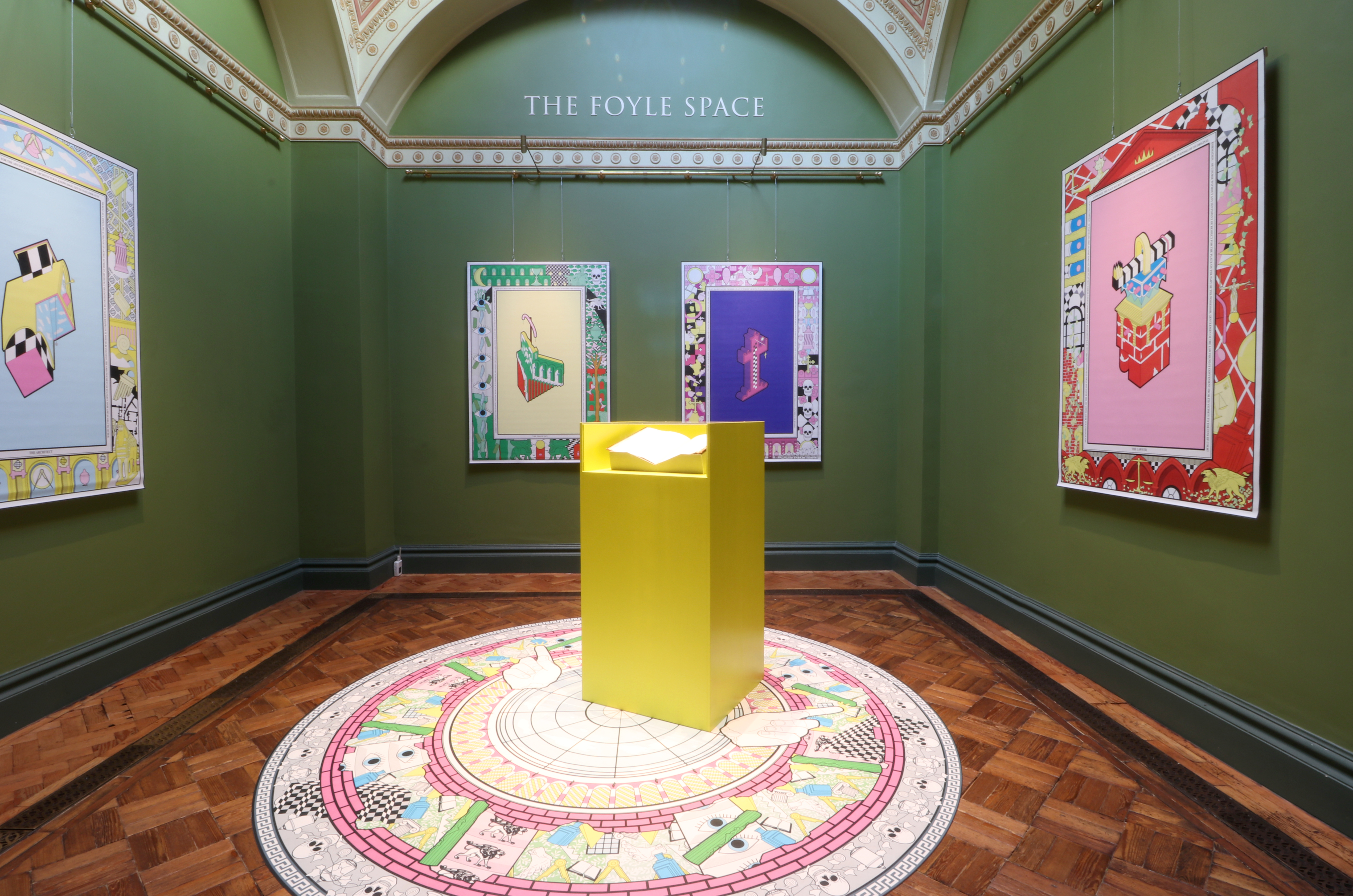
Out Of Character: A Project By Studio MUTT
Sir John Soane's Museum London
12 September – 18 November 2018
Studio MUTT has artfully placed four architectural ‘characters' within the treasure trove that is Sir John Soane's Museum in London. Representing ‘a Lawyer, a Monk, a Magician and an Architect', the four elements are the design incarnations of Soane's four imaginary inhabitants of the house, as described in his 1812 text ‘Crude Hints towards an History of my House'. In the text, Soane contemplates visitors to his house in a future where the building is in ruins. Studio MUTT drew inspiration from the great architect's writings and envisioned those ‘inhabitants' in brightly coloured and graphically strong architectural volumes, which have been woven into the building's existing decor. Through their rich displays, MUTT – founded by Graham Burn, James Crawford and Alexander Turner – offer a touch of colour, humour, as well as an opportunity for debate on the juxtaposition of old and new, and the role of ornament in modern architecture. Writer: Ellie Stathaki.

Architecture Prototypes and Experiments
The Aram Gallery
2 August – 1 September 2018
The Aram Gallery’s lauded ‘Prototypes and Experiments’ exhibition returns for its tenth iteration. The series looks to architecture in 2018, and focuses on the role that physical models play during project development. A host of participants present case studies to translate how they utilise models: whether to develop ideas, project feelings stimulated by space or steer decision-making. Contributors include Alma-nac and Feilden Fowles, who reveal how models inform their designs via accompanying commentaries and additional physical items including material palettes, 1:1 mock ups and prototype elements. Residential, office and cultural developments stimulate a dialogue that considers the model in differing architectural contexts. Adjaye Associates looks to its most celebrated pavilions from 2008-2013, whilst Mary Duggan Architects reveals concepts for a new family home, pavilion and farm on a rural site in Somerset. Meanwhile, recent completions and smaller scale projects examine the model at different scales, from Neri & Hu’s 240m-long Zhengzhou Office ‘groundscraper’ to a Piercy and Company door handle prototype. Writer: Luke Halls

Denise Scott Brown: Wayward Eye Photography of the 1950s and 1960s
Betts Project
11 – 28 July 2018
This exhibition frames ten photographs taken by Denise Scott Brown architect, urbanist, theoretician, and educator. The spontaneous snaps, shot between 1956 and 1966, show Scott Brown’s forays into the topics that would later be defined in her classic text ‘Learning from Las Vegas’, penned with her partner Robert Venturi. Co-created by Plane–Site, Betts Project and Jeremy Eric Tenenbaum, the show opens up discussions of pop culture, post-modernism and the American vernacular, all seen through the lens of Scott Brown’s 1960s street scenes. Each photograph is accompanied by an intimate commentary by Scott Brown. Her perceptive eye reveals much more than just a straight-forward cityscape. Her daring to enter the realms of both photography and architecture – both fields dominated by men during this time – opened up new ways of thinking about urban space and the images have gone on to be hugely influential for today’s architects, artists, and social scientists. Courtesy of Betts Projects
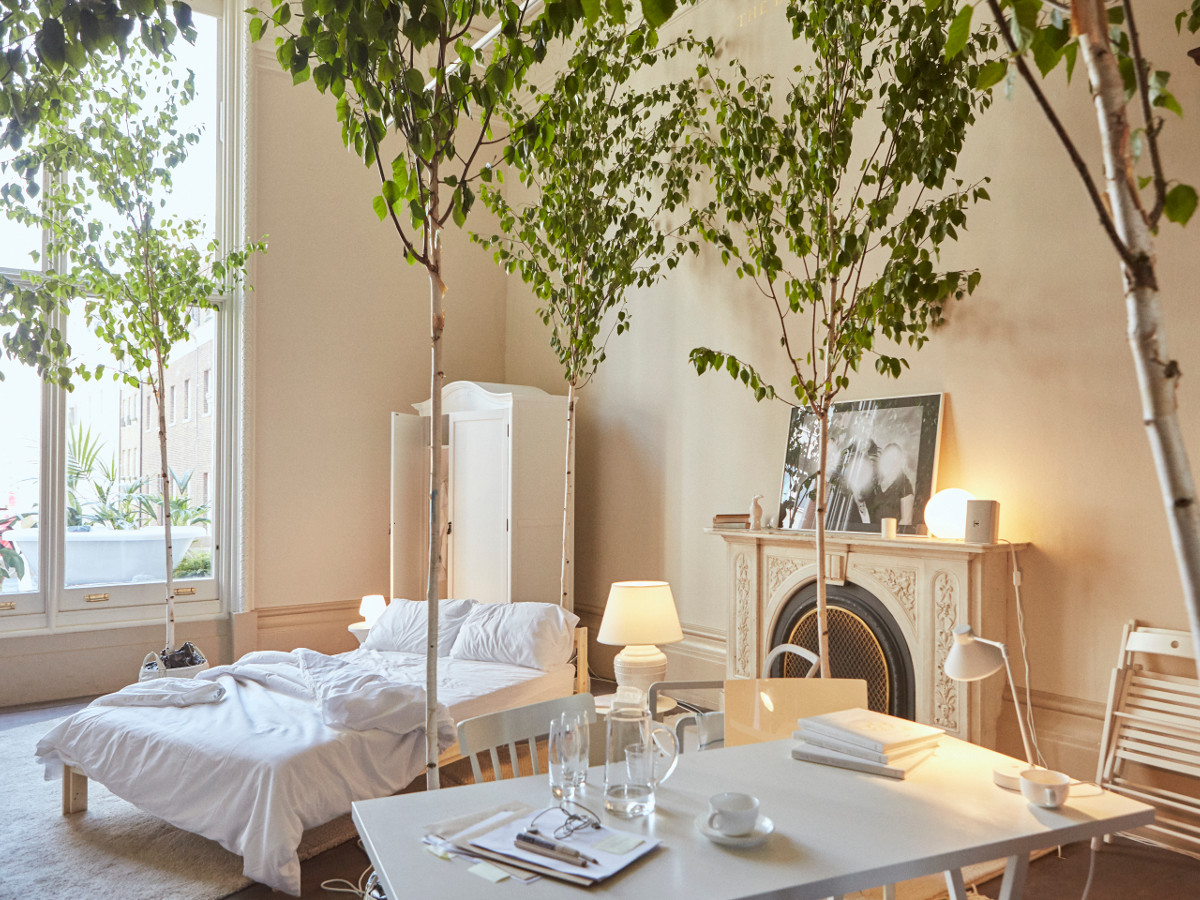
Invisible Landscapes
Royal Academy
19 May 2018 — 4 March 2019
An exhibition at the RA’s brand new Architecture Studio explores how digital technologies are transforming the way we live and our everyday environments. Everything from privacy and security, to sustainability and health, is affected and our homes are changing in both subtle and radical ways. The RA invited three practices from different disciplines to create installations in the space throughout the course of the show. The first practice to transform the space is Barcelona-based architecture practice MAIO. The piece explores the impact of smart technologies in domestic spaces, with the home presented as an interconnected hub, where boundaries are blurred between private and public. Writer: Ellie Stathaki.

Offsite: Shigeru Ban
Vancouver Art Gallery
11 May – 8 October 2018
There is a certain humility and grace to the Shigeru Ban installation at the Vancouver Art Gallery’s offsite (on through October 8, sponsored by PortLiving and linked to the upcoming Cabin Feverexhibition). The tiny house made of paper, canvas, cardboard tubing, plywood and milk crates is flanked by photographic displays of the Japanese architect’s work housing global victims of natural disasters in similar structures. In a city in full housing crisis mode, the demure dwelling in the Jim Cheng designed Shangri-La complex stares down the Trump Tower across the street and holds its own.
Writer: Hadani Ditmars.
![IN[COGNITUS] by Julien Lanoo at WAOO Centre of Architecture and Urbanism](https://cdn.mos.cms.futurecdn.net/UAwou9TQNfufbqEJQMnucX.jpg)
IN[COGNITUS]
WAOO Centre of Architecture and Urbanism
5 June – 28 July 2018
Breaking away from the traditional architecture exhibition format, Julien Lanoo examines human beings within the built environment in a new retrospective at The Centre of Architecture and Urbanism. In this show, Lanoo presents his own photography of both iconic buildings and vastly lesser-known projects, provoking a dialogue about the ‘incognito’ figures in society and their relationships with these places. Lanoo assumes the role of auteur in the show, capturing locations from the world’s emerging countries and giving them equal merit to the large scale, recognisable buildings featured. Developments featured include builds by OMA in Taiwan and China, and smaller-scale projects such as street food stalls in Taipei. Pictured, Independence Square, Accra, Ghana, 2016.

‘Disappear Here’
The Architecture Gallery, RIBA, London, UK
2 May – 7 October 2018
A new show at the RIBA in London explores the magic of perspective. Combining art, architecture and mathematics, perspective drawing has been a key tool in the architects’ arsenal for centuries and now an installation by Sam Jacob Studio investigates its spatial applications. From deceptive murals and mirrored elements, to playful structures, this exhibition has it all; along with a range of original drawings and writings by some of the most talented designers, sourced from the RIBA archives. Inspired by a book by Sebastiano Serlio entitled ‘Seven Books of Architecture’, Jacobs’ site-specific design is fun and immersive.
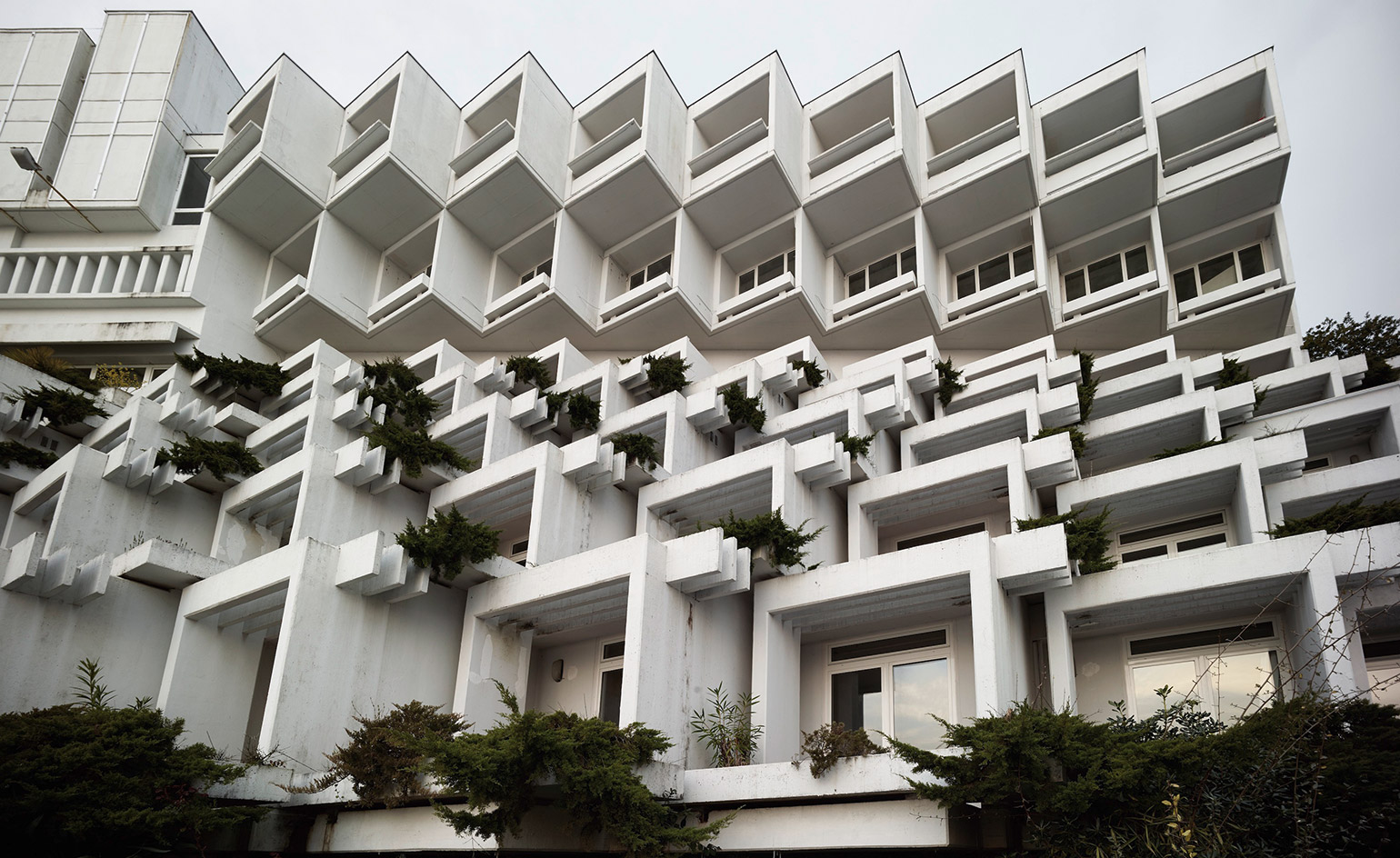
Towards a Concrete Utopia: Architecture in Yugoslavia, 1948-1980
MoMA
15 July 2018 – 13 January 2019
Historically, Yugoslavia has distanced itself from aligning with any major international power bloc, joining the Non-Allied Movement in 1961. As a result, emerging architecture was modernised with the intent of stimulating economic growth, improving the general public’s quality of life and engaging with its culturally diverse population. This particularly experimental and consumer-minded architectural period is explored in a new show at the Museum of Modern Art, presenting works by Bogdan Bogdanović, Juraj Neidhardt, Svetlana Kana Radević, Edvard Ravnikar and others. Essays, new photographs and archive reproductions will explore this previously understudied strand of modernist architecture.
Pictured, Hotel Adriatic II exterior.

Le Corbusier by the Sea
National Museum of Art, Architecture and Design, Oslo, Norway
5 May – 28 October 2018
Presenting Le Corbusier as a person of artistic humour, Norway’s National Museum of Art, Architecture and Design explores the Swiss-French architect’s annual summer retreat to Bassin d’Arcachon between 1926-36. Sketching his surroundings during the retreat, Le Corbusier would then return to his Paris studio to abstract the subject matter found while away from the city. Reproductions of sketches, written notes, photograph and paintings feature, a different insight into the architect’s artistic personality. Pictured, Trois baigneuses, by Le Corbusier, 1935.
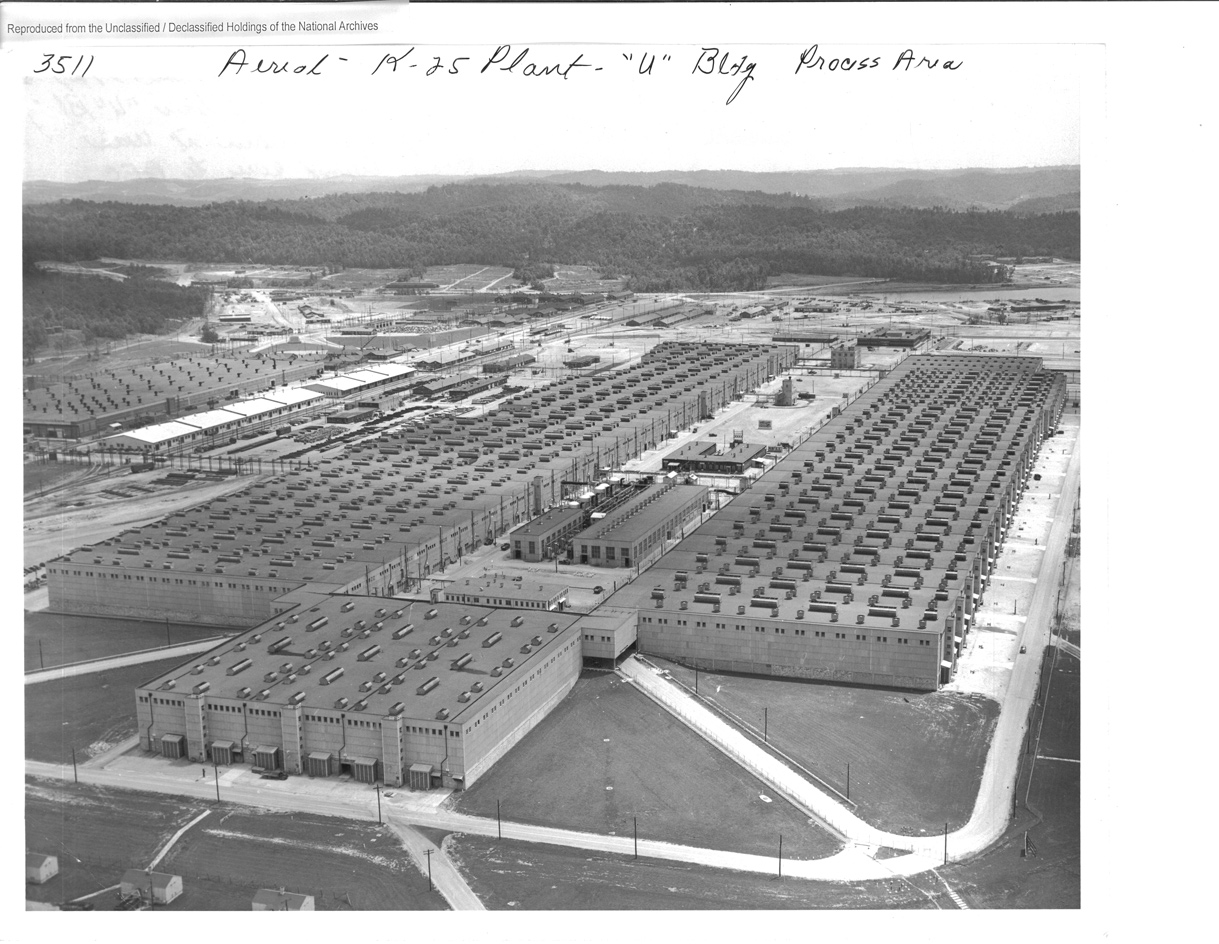
Secret Cities: The architecture and planning of the Manhattan Project
National Building Museum, Washington D.C., US
3 May 2018 – 3 March 2019
The creation of the atomic bomb marked a consequential milestone in scientific and militaristic history, its development kept under strict classification until the devastation of Hiroshima in 1945. A new show at Washington D.C.’s National Building Museum explores the three ‘secret cities’ built by the US government to support the development of the nuclear weapon; Oak Ridge in Tennessee; Hanford/Richland in Washington; and Los Alamos in New Mexico. The show looks to the grand-scale design, planning and construction of these from-scratch cities, and how they ultimately influenced the Cold War, nuclear power, and the development of radiological medical technology.
Pictured, Aerial view of the K-25 plant, Oak Ridge, ca. 1945.
Ellie Stathaki is the Architecture & Environment Director at Wallpaper*. She trained as an architect at the Aristotle University of Thessaloniki in Greece and studied architectural history at the Bartlett in London. Now an established journalist, she has been a member of the Wallpaper* team since 2006, visiting buildings across the globe and interviewing leading architects such as Tadao Ando and Rem Koolhaas. Ellie has also taken part in judging panels, moderated events, curated shows and contributed in books, such as The Contemporary House (Thames & Hudson, 2018), Glenn Sestig Architecture Diary (2020) and House London (2022).
-
 Eight questions for Bianca Censori, as she unveils her debut performance
Eight questions for Bianca Censori, as she unveils her debut performanceBianca Censori has presented her first exhibition and performance, BIO POP, in Seoul, South Korea
-
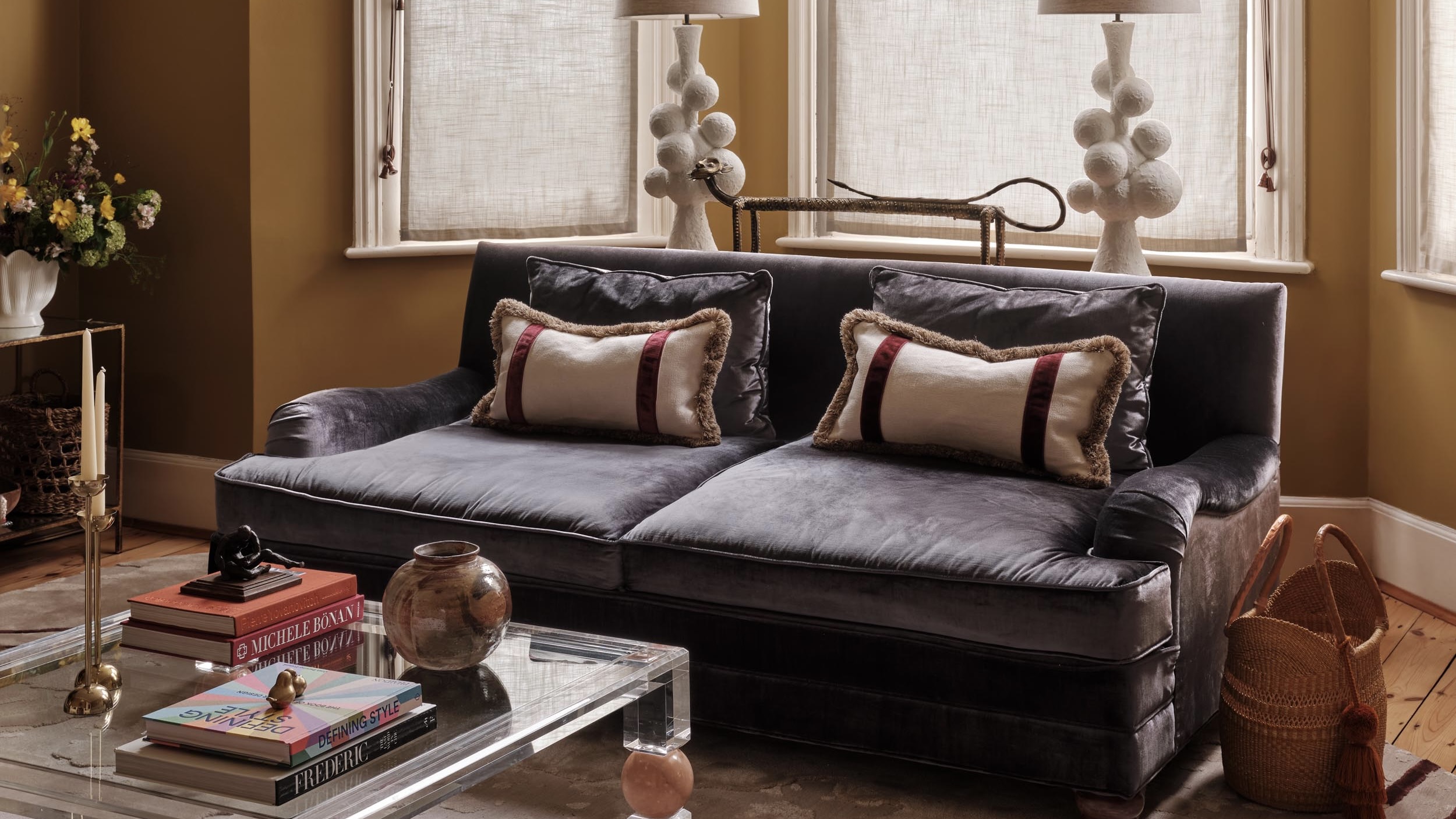 How to elevate a rental with minimal interventions? Charu Gandhi has nailed it with her London home
How to elevate a rental with minimal interventions? Charu Gandhi has nailed it with her London homeFocus on key spaces, work with inherited details, and go big on colour and texture, says Gandhi, an interior designer set on beautifying her tired rental
-
 These fashion books, all released in 2025, are the perfect gift for style fans
These fashion books, all released in 2025, are the perfect gift for style fansChosen by the Wallpaper* style editors to inspire, intrigue and delight, these visually enticing tomes for your fashion library span from lush surveys on Loewe and Louis Vuitton to the rebellious style of Rick Owens and Jean Paul Gaultier